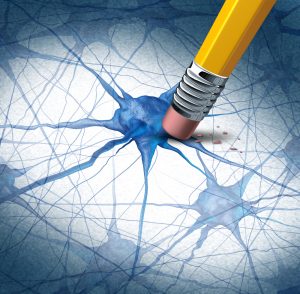Alzheimer’s disease (AD) involves degeneration of tissue in the brain while type 2 diabetes (T2D) involves an problem with insulin resistance. At first glance it may seem that these two diseases are vastly different and have no connection. How could a disorder of glucose regulation in the blood have anything to do with neurons dying in the brain? Interestingly, recent research has suggested an intimate connection between the two diseases. It turns out that the onset of either of these two diseases will increase the likelihood the other will develop. Like many diseases, type 2 diabetes and Alzheimer’s disease involve overlapping neurochemical pathways resulting in a complex interaction between the two.

Insulin resistance in the body and brain
Insulin is a vital hormone used in glucose regulation in the body. When this molecule binds to insulin receptors, it signals the cell to let glucose in to be used in energy metabolism. In type 2 diabetes, this process is hindered. Insulin continues to be excreted by the pancreas but cells are unable to respond to it preventing glucose from entering cells. This resistance to insulin can have negative effects on both the body and brain. In the brain, insulin is used not only for energy metabolism but can also play a critical role in signaling. Insulin in the brain can be used for hunger regulation and spacial memory tasks. If this molecule is not being used properly in the brain, bad things happen.
What came first, the insulin resistance or the neuronal degeneration?
It is unclear whether degeneration of neurons in AD causes T2D or insulin resistance causes neuronal death. There is evidence for both cases suggesting that the onset of either of these diseases involves many different aspects. On one hand, it is thought that insulin resistance can arise from over inflammation of the brain due to an abnormal immune response. On the other hand, insulin resistance can be more directly correlated to a poor diet resulting in excess fat on the body. Both of these theories are valid and a combination of both is probably what is happening in most cases of AD-T2D comorbidity. Insulin resistance from excess fat reduces regulation of neuron growth causing some neurons to be destroyed when they shouldn’t and some unnecessary neurons to remain. The death of neurons from an abnormal inflammatory response can lead to a cascade of events leading to further degeneration and insulin resistance within the brain.

Where do neurofibrillary tangles fit in?
Neurofibrillary tangles are composed of clusters of proteins that conglomerate in the brain. The Tau protein is commonly used in neurons to strengthen microtubules and increase the efficiency of transport within the cell. These proteins have a tendency to be misshapen due to problems with insulin resistance further up the signaling pathway. When these proteins are misshapen, they will not do their job in the cell and will clump together. This causes problems in the brain by increasing toxicity and ultimately causing neurons to die. The death of these neurons are what causes many of the symptoms commonly associated with Alzheimer’s disease such as amnesia.
What to take away from this research
- Alzheimer’s disease is a result of neurodegeneration
- Type 2 diabetes is a result of insulin resistance throughout the body and brain
- These two diseases are linked through complex interacting mechanisms in the brain
- Diet and exercise can be helpful to prevent the onset of both diseases
- Genetics can play a role
- Further research is necessary to fully understand how these two diseases are linked but some aspects of the connection have been uncovered
Image Sources:
researchfeatures.com
alsnewstoday.com